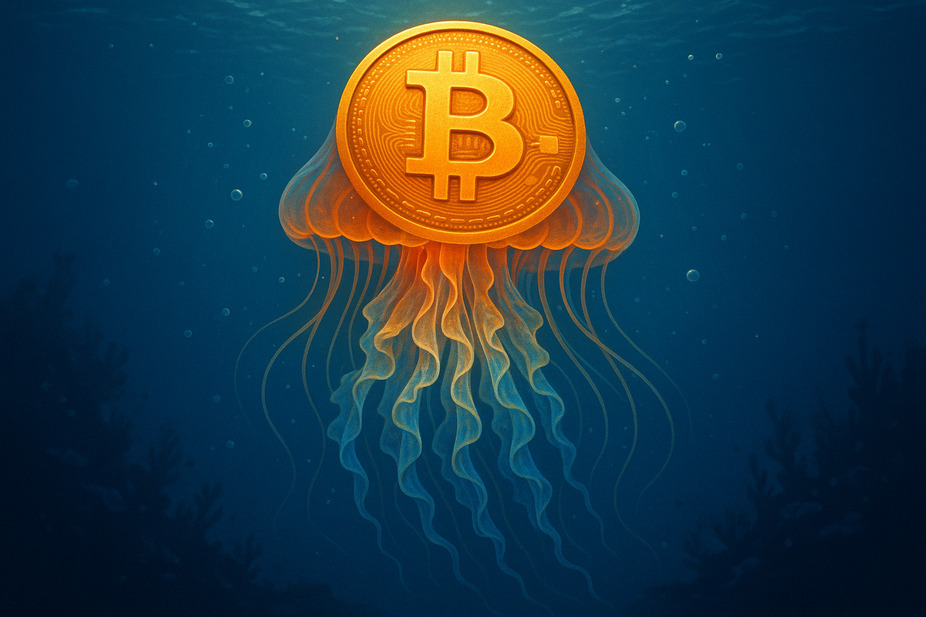Digital sands: the gulf’s ambition for an AI and Web3 future

People all over the world were looking at the new rules in Dubai, but the Gulf states were already doing more than just trying them out. They’ve started an ambitious, large-scale construction project: building their future. The UAE and Saudi Arabia are investing a lot of money into creating a new economy that is based on artificial intelligence and Web3. This isn’t just about buying technology and using it; it’s about creating a system that can survive on its own. They are doing everything from finding the best technology and getting the best people to working on their own special networks and using blockchain in big projects like NEOM. Let’s take a closer look at how this bold vision is put together.
Silicon and data: the new resource
The technology race in the UAE and Saudi Arabia is not random; it is driven by a carefully calculated strategy. The plans of Saudi Arabia (Saudi Vision 2030) and the United Arab Emirates (UAE Centennial 2071) are more than just good ideas; they are detailed plans to stop relying on oil. Leaders in the area are investing a lot of money to create a new economic base.
You can’t just diversify into normal industries anymore. Today, the focus has moved to high-value sectors like artificial intelligence, biotechnology, and the data economy. These fields require a lot of computing power, so the Gulf monarchies have decided to invest a lot in the latest technology.
In 2023, it was revealed that Saudi Arabia and the UAE were buying a lot of high-performance NVIDIA H100 chips. These are the chips that are crucial for training large language models (LLMs). The Financial Times reported that Saudi Arabia, via a research centre at King Abdullah University of Science and Technology (KAUST), got hold of at least 3,000 of these chips, each of which cost about $40,000. This means the total cost was about $120 million.
Skip ahead to May 2025. Nvidia and Saudi Arabia made a big partnership official. They want to build a lot of technology in the kingdom. One important part of this work is the building of “AI factories” that can produce 500 MW. These factories will be able to hold hundreds of thousands of GPUs over five years. The first phase will see the deployment of a supercomputer powered by 18,000 of the brand-new GB300 chips, with the Saudi Data & AI Authority (SDAIA) adding another 5,000 Blackwell GPUs. This ambitious project is aimed at making Saudi Arabia a global leader in AI, which is a key part of its Vision 2030 plan.
The UAE is also working hard on this. The nation has become an important partner for American AI companies. Take Abu Dhabi’s G42 technology group, for example. This group is led by UAE National Security Advisor Sheikh Tahnoon bin Zayed Al Nahyan. They’ve teamed up with Cerebras Systems to build nine Condor Galaxy AI supercomputers. The first machine, CG-1, is already one of the world’s 50 most powerful supercomputers, even though it was launched in the US. The rest of the units are scheduled to be sent to the US and the UAE.
But there was a problem in July. The Wall Street Journal said that the US had stopped selling chips to the UAE. The main worry was that these important semiconductors might be sent to China instead. The publication noted that smuggling risks had actually been discussed during the initial deal negotiations. At that time, officials from the UAE and Saudi Arabia had reportedly assured the US that there would be robust protective measures in place.
This strong desire for new technology goes beyond just improving how powerful computers are. It’s a planned move to protect “digital sovereignty.” By setting up their own advanced computer networks, Gulf countries want to rely less on foreign tech giants like Amazon Web Services or Microsoft Azure. This independence lets them develop and train their own AI models, which are designed to meet their specific regional needs.
The war for talent: a reverse brain drain
Even the best computers and other equipment are useless without the people to use them. The UAE and Saudi Arabia have started a huge project to attract the best people to work for them. Their ambition is not just to hire expatriates; they want to create a global talent hub that can compete with Silicon Valley.
A key part of this plan is the “golden visa” program. In the UAE, professionals with important jobs in science, technology, research, programming and Web3 entrepreneurship can get a 10-year residency permit. This visa gives you more freedom than any other: you can live and work without an employer, you can bring your family, and you can get tax benefits.
Saudi Arabia has now introduced its own Premium Residency program, offering similar benefits to attract international professionals.
Another great thing about working here is the salary. People working as AI engineers and blockchain developers in Dubai or Riyadh can expect to be paid more than people in the US and Europe for doing the same job. Another advantage is that they will not have to pay any personal income tax.
But the region isn’t just interested in getting people to move there. Billions are also being spent to support local research institutions. A great example of this is the Mohamed bin Zayed University of Artificial Intelligence (MBZUAI) in Abu Dhabi. It is the only university in the world that focuses solely on AI. It attracts brilliant students from all over the world by offering free tuition, scholarships, housing, and the chance to work with leading professors and use the latest computer facilities.
At the same time, Saudi Arabia is making KAUST a world leader in basic research. It is giving a lot of money to its laboratories and providing big grants for really new and exciting projects.
The ultimate goal is straightforward: to foster an environment where the brightest minds can not only work but truly innovate, launching startups and meticulously constructing a new technological ecosystem from its very foundations.
From Falcon to NEOM: crafting a national tech stack
The Gulf nations’ main plan is to build a technology system that covers everything from basic research to its real-world use in their huge infrastructure projects.
A great example of this is the way it has developed its own large language model, Falcon. The Technology Innovation Institute in Abu Dhabi created the Falcon-180B model, which was released in 2023 and outperformed Meta’s Llama 2 in various tests. It even competed with OpenAI’s GPT-4. It was made open-source for commercial and research purposes, which was a clever move to increase its influence in the global AI area. This shows that the UAE is not just a consumer of advanced technology, but also a significant producer.
In Saudi Arabia, the NEOM megaproject is a huge project that is testing out new technologies.
Envisioned as a “cognitive city,” NEOM seeks a complete fusion of the real and digital realms. NEOM Tech & Digital, a dedicated subsidiary, is crafting the digital layer, including the XVRS metaverse. This metaverse will function as a digital twin of the city, allowing residents to seamlessly engage with urban services via AR/VR interfaces.
At the very heart of this sophisticated system lie AI and blockchain. Artificial intelligence will orchestrate urban infrastructure, covering everything from autonomous transport and energy grids to personalized medicine and education. Blockchain, on the other hand, will establish the bedrock for secure digital identities for each resident and an entirely transparent data governance framework.
The UAE hosts analogous initiatives. Dubai’s ambitious Metaverse Strategy, for instance, projects the creation of 40,000 virtual jobs and a $4 billion boost to the emirate’s GDP by 2030. This strategy is all about weaving Web3 technologies into sectors like tourism, education, retail, and government services.
Blockchain: the bedrock of a new economy
In the Persian Gulf, cryptocurrencies and blockchain are seen as more than just investments – they’re seen as the building blocks for the economy of the future. The governments of the region were among the first to see how this technology could be used to solve real-world problems and create new markets.
A particularly important focus is on Real World Assets (RWA). Dubai has already led the way in projects for tokenising real estate. This new approach lets you divide up a costly asset, maybe an entire floor in a skyscraper, into thousands of digital tokens. Global investors can then buy these tokens, which gives them a share in a real asset and the right to some of the rental income. This makes the PropTech market much more liquid and accessible.
To make sure this growing sector is governed responsibly, Dubai created the Virtual Assets Regulatory Authority (VARA). Its job is to create clear and fair rules for crypto companies, which will make the emirate a popular place for global businesses while protecting investors.
Blockchain can also make sure that big construction and logistics projects are completely transparent. In projects like NEOM or the development of new districts across Dubai, blockchain is used to record every operation. This includes things like buying materials and subcontracted tasks. Each entry on the blockchain effectively stops fraud, reduces costs, and makes it easier to oversee projects valued at hundreds of billions of dollars.
New financial markets are also being set up. For example, the Abu Dhabi Securities Exchange is currently testing a new system called distributed ledger technology for issuing digital bonds and other securities.
The technology that is spreading rapidly across the Gulf states is not just a quick response to short-term trends. It’s a strategy that’s been carefully planned and has a lot of money behind it. By investing heavily in AI and Web3, the UAE and Saudi Arabia are building a powerful new global technology powerhouse on their desert lands. This could challenge the current global leaders in the coming years.












